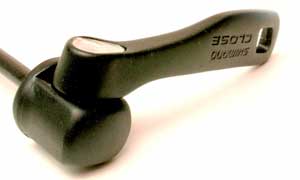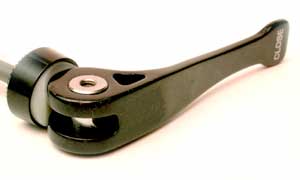I will throw this into the mix. This is from Sheldon Brown's website. He is long gone but his wisdom about bikes is still alive and well.
Enclosed cam:
The original type of quick release skewer, invented by Tullio Campagnolo, features a steel cam surrounded by a solid metal body. The body is the part that moves back and forth as you flip the lever, and usually has teeth to press against the left dropout.
The cam is well-shielded against contamination, and can be lubricated by applying a couple of drops of oil every couple of years.
Exposed cam:
Sometime in the '80s, a variant type of skewer was introduced, one that is less expensive to manufacture, and is sometimes a bit lighter. This type uses a split external cam that straddles the end of the skewer. External-cam skewers use a curved plastic washer between the cam and the toothed metal washer that presses against the dropout.
This type was originally marketed as an "upgrade" because it could be made a little bit lighter.
Despite the marketing hype associated with these "boutique" skewers, they are actually considerably inferior in functionality to the traditional type. They are often seen under rather prestigious names, as was the one photographed here. (I Photoshopped the logo off, so as not to pick on one particular brand.)
The exposed cam cannot be kept as clean and well-lubricated as the shielded one can.
In addition, the exposed cam has a larger diameter, (typically 16 mm vs. 7 mm for an enclosed cam) so the friction is acting on a longer moment arm (the radius of the cam.)
The result is that the exposed-cam type provides very much less clamping force for a given amount of hand force on the lever.
Fortunately, the move toward "boutique" skewers happened after the industry had mostly moved to frames with
vertical dropouts and forks with "
lawyer lips."
The exposed-cam skewers are generally OK for vertical dropouts in back, and for forks with "lawyer lips", but should not be relied on with horizontal dropouts or plain forks.